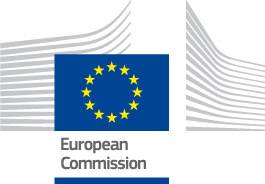Twinning as a way of sharing good practices and avoiding "reinventing the wheel"
date: 28/03/2024
Techniques are needed in Europe to help scaling up digital health and care. The primary responsibility for organising and delivering health services and medical care in the European Union (EU) is that of the Member States. Many good practices – solutions, methodologies, processes, strategies, and business models – and associated knowledge about health promotion, disease prevention and patient-centred care originate in
Member States, whether at a local, regional or national level. Healthcare systems in Europe and worldwide are continuously under development, due to substantial advances in digitisation and the boom occurring in the digital transformation of systems, processes, and models of care. In such a fast-paced and changing environment, promotion and sharing of best practices is key to avoiding reinvention of the wheel.
Collaborative frameworks are also helpful. At an EU level, the European Commission (EC) supports the healthcare sector through a comprehensive framework for health research and collaboration across the borders between Member States. This collaboration has enabled an astounding number of partnerships, joint projects, and initiatives. These partnerships have already produced results and generated new health and care solutions and practices, and continue to do so. Many of these practices are successfully exploited by the organisations which participated in the original undertaking.
The transfer of practices has not moved, however, in all cases as substantially or as fast as might have been expected. Despite significant efforts, many practices which are highly relevant for other organisations have not yet reached them. There is a variety of reasons for this lack of transfer. Among them can be listed: poor
promotion, lack of ‘findability’, insufficient documentation about the practices, and the associated
knowledge needed for it to be applied by another organisation, or lack of knowledge on how to adapt
the practice to the conditions of another healthcare system.
Twinnings are an example of good practice in terms of transferring knowledge and scaling up.
Twinning is used to describe institutional cooperation and networking. Historically, the scheme was first used in the EU’s neighbourhood and enlargement policy to facilitate institutional cooperation between the public administrations of EU Member States and beneficiary or partner countries. Twinnings bring together stakeholders with the aim of achiev ing concrete, operational results through peer-to-peer activities.
Step by step, the twinning instrument gained ground in other policy fields, including digital health. Various European projects have been successfully implementing twinning for many years. The European
Innovation Partnership on Active and Healthy Ageing (EIP on AHA) managed several twinning waves between Reference Sites. More than 30 pairs of twins, involving more than 60 regional organisations, received awards. The SCIROCCO Exchange project has incorporated in-depth knowledge transfer exercises, similar to twinning. The ScaleAHA study funded and analysed the results of twinnings involving 20 pairs of Reference Sites that were committed to scaling up solutions for active and healthy ageing. The GATEKEEPER project carried out similar twinnings in 2023.
To learn more about twinnings, visit the dedicated brochure created as part of the DigitalHealthEurope project: https://digitalhealtheurope.eu/wp-content/uploads/DHE_Twinning_Brochure.pdf
